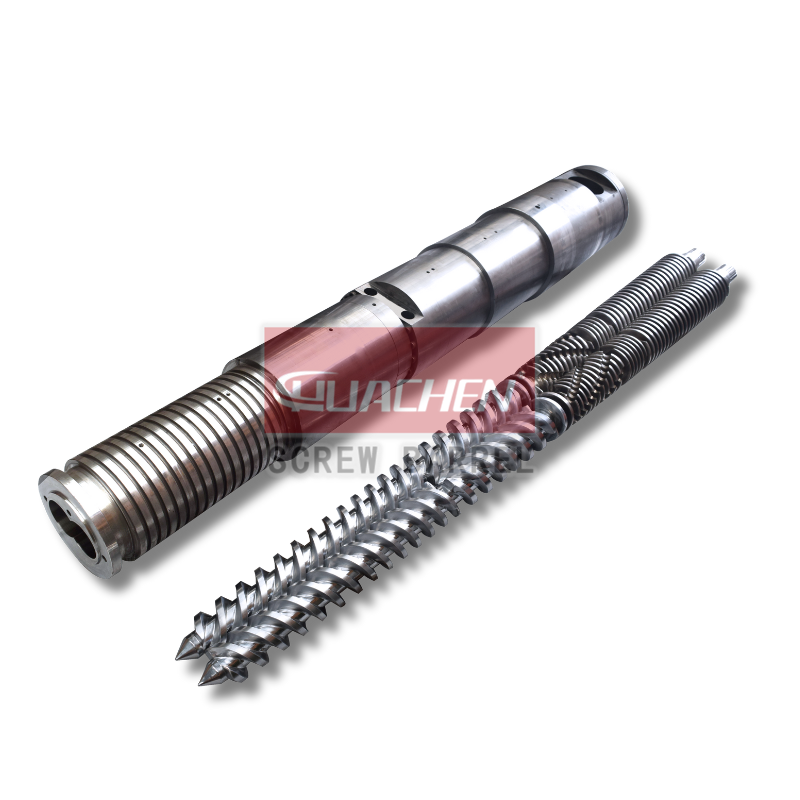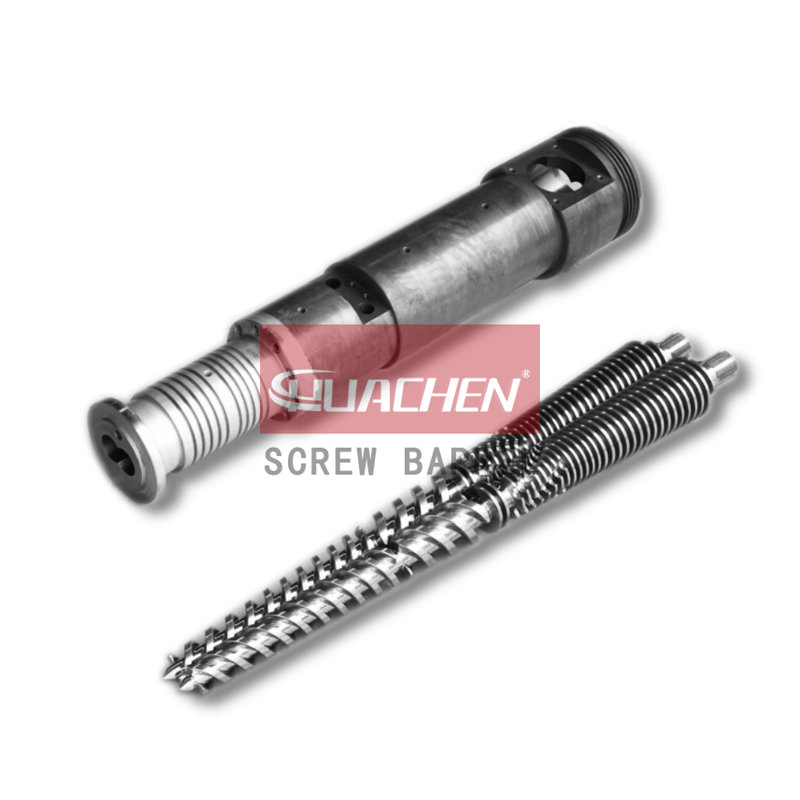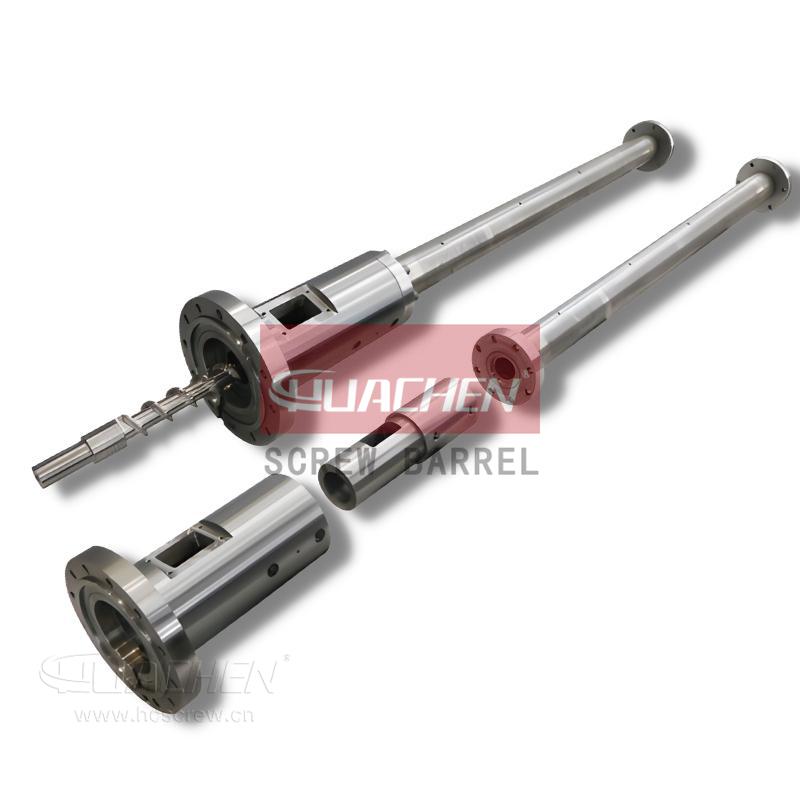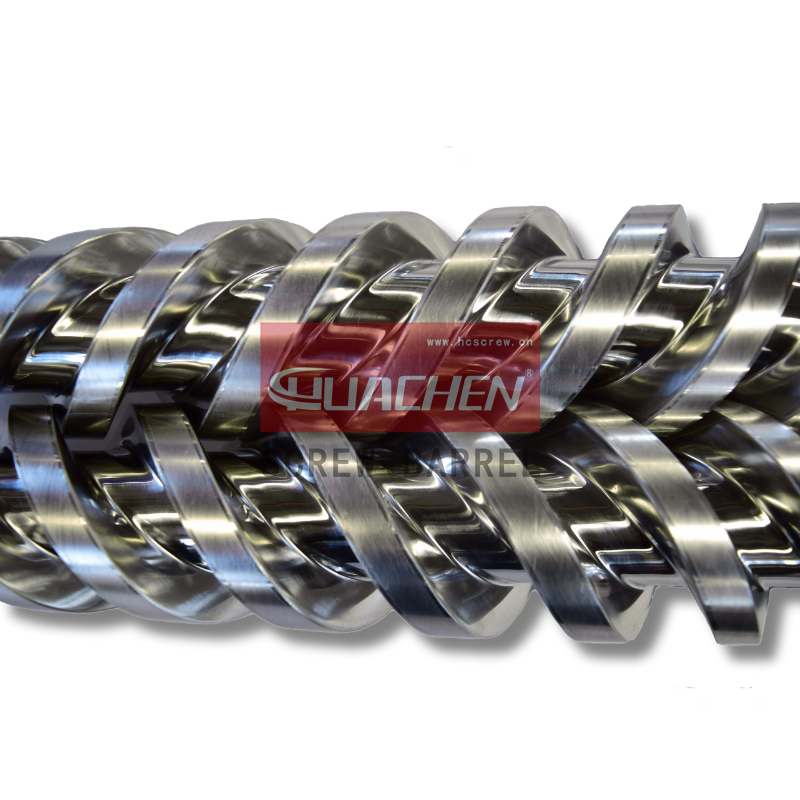Clearance Between Conical Screw Barrel Affects PVC Profiles Quality
Date:2022-8-09 Author:hcscrew
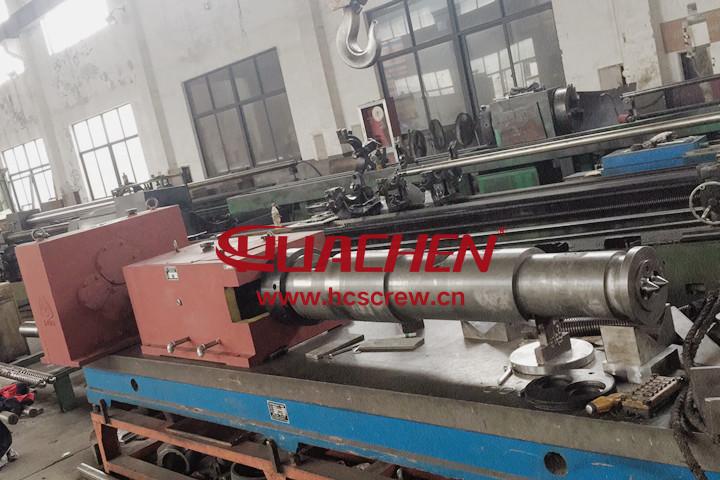
01:Conical twin screw barrel has four working clearances
The conical twin screw and barrel have four working clearances.
(1) the radial clearance between the screw barrel bore and the end faces of the screw prongs.
(2) an internal clearance between a screw’s end face and its groove’s bottom face when the screws are toothed together.
(3) axial clearance between the screw face and the side of the screw groove when the screws are toothed together.
(4) axial clearance between the small screw head and the screw barrel’s top end.
As discussed above, the first two clearances not only play a role in material calendaring and friction, but also prevent backflow. The first clearance is particularly important. Material leakage or backflow that exceeds the limit will adversely affect PVC profile quality. It is also the main factor limiting the extruder’s working life.
Third clearances play an active role in both shearing and conveying material. When the clearance between the screw prongs is too small due to improper installation, black lines appear on the PVC profiles as a result of friction. As wear and tear occurs, the clearance increases. This results in more material conveyed, less melting and plasticizing, and less efficient product withdrawal.
The fourth clearance contributes to the process of extrusion. Neither installation nor wear and tear can alter the second clearance, which is primarily determined by the process. It is necessary to make precise adjustments before installing the third clearance. During the first clearance adjustment, the fourth clearance is adjusted as well.
Following the installation of the replacement screws, the so-called extruder clearance adjustment typically refers to the first and third clearance adjustments. After normal operation, the first clearance of the extruder is well adjusted.
02: Improper clearance between screw and barrel affects PVC profiles quality
With the use of the conical twin screw extruder, the extrusion production process possesses the advantages of uniformity, material is not easy to decompose, high yield, high quality, low power consumption, wide range of applications, and can be directly processed through powder extrusion. A screw’s design and manufacturing qualities determine the extruder’s shear performance. Furthermore, the axial and radial clearances of the screw barrel and screw are closely related.
During extruder assembly, if the radial or axial clearance between the screw barrel, or the clearance between two screws is small, the local friction between the screw barrel and screw will cause yellow or black lines in the PVC profiles. This will make normal production difficult. An excessive clearance between screws increases conveying volume, weakens shear and friction performances, and causes the material to become “underplasticized.” The material in the head or compression section of the melt pressure will produce a “counter-flow” or “positive flow” phenomenon if the radial clearance between the screw and barrel is too large or gradually widens over time.
03: Here is an example of an extruder with a 2-1-1-3-3 head number conical twin screw structure:
As PVC melt moves from the feed section’s double-head screw to the compression section’s single-head screw, the barrel pressure rises. With the compression section’s single-head screw moving with the melt section’s three-head screw, the barrel pressure drops. This is where it starts moving in parallel. Metering section, also a three-head screw groove, but smaller in volume than melt section, receives melt PVC from the melt section. Under the counteraction of the head, the pressure in the barrel gradually rises. It is also the part of the screw with the largest compression ratio that wears out the fastest. As the radial clearance between screw and barrel increases, material flows from high pressure to low pressure.
1. Counterflow
During counterflow, melt pressures in the metering and compression sections of the screw shear are higher than in the lower melt section and flow direction of the feed section. The process of “counter-current” shears and rubs the material repeatedly, causing it to become over-plasticized. The material adhering to the barrel wall will leave a yellow line on the PVC profile. The yellow line may also become black if the adhering material stays too long and some materials degrade.
2. Positive flow
“Positive flow” means the material melts faster in the compressed section compared to the flow direction. Under-plasticization can occur when shear and friction slow down the “positive flow” process. It results in a brittle profile with poor pinching of the outer wall and the inner tendons. It is also important to consider thermal stability and impact resistance when operating at high temperatures.
As a result of excessive wear on the barrel’s inner wall, a wear and tear shoulder lift occurs. Due to this, the heavier part of the twin screw gradually wears down to a crater. Due to lack of wear, the clearance between the thread and the threaded transition area becomes a tab. When the radial clearance is adjusted, the screw will move forward, rubbing violently against the shoulder. As a result of this process, black lines appear on the PVC profile.
For long-cycle stable operation of the extruder, it is important to ensure the correct assembly and regular inspection of the conical twin screw extruder clearance. It is imperative not to overlook the importance of adjustment.
Follow us and HUACHEN Screw Barrel will provide more information on conical twin screws for PVC profiles. Please contact us if you would like a quote on our latest conical twin screw barrel.
HUACHEN Screw Barrel Recent Post
- High-performance PVC Screw Barrel for Efficient Extrusion
- Durable Conical Twin Screw Barrel for Precision PVC Pipe Production
- High-Speed Screw Barrel for Increased Extrusion Efficiency
- Super Wear-Resistant Bimetallic Alloy Coating Screw Barrel for High Output Extruders
- High-Precision Parallel Twin Screw Barrel for Extrusion Excellence
- Top Quality Single Screw Barrels for Plastic Extrusion Applications
- High-quality Extruder Screw Barrel for Reliable Performance
- Efficient Plastic Extrusion Screw Barrel for Superior Output
conical twin screw barrel extruder screw barrel extrusion screw barrel Foam sheet processing high speed screw barrel HUACHEN SCREW news injection screw barrel parallel twin screw barrel pa screw barrel pe making formula pe screw barrel plastic fiber processing plastic fibre screw barrel Plastic film making screw barrel plastic pipe processing Plastic profile processing Plastic raw material knowledge pp screw barrel PVC making formula pvc screw barrel related parts for screw barrel screw barrel engineering work screw barrel knowledge single screw barrel twin screw barrel
;